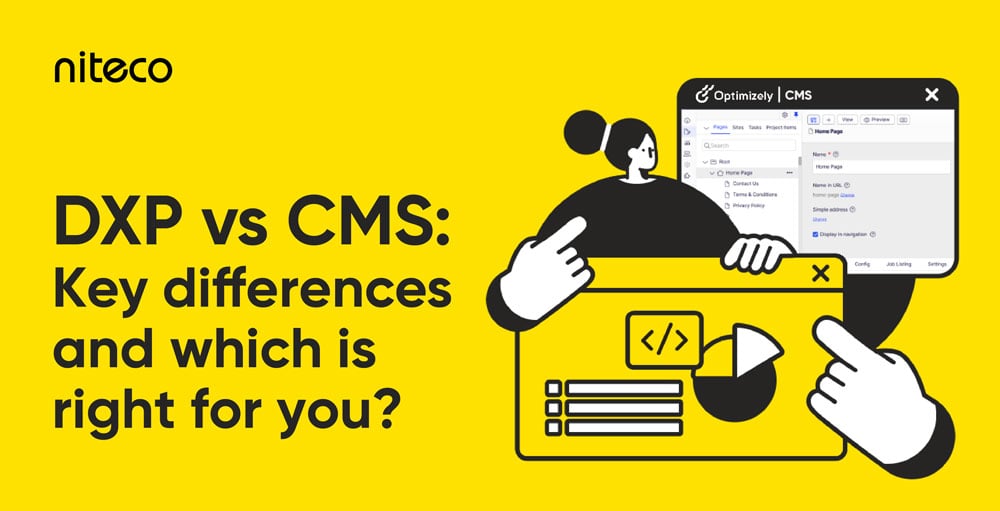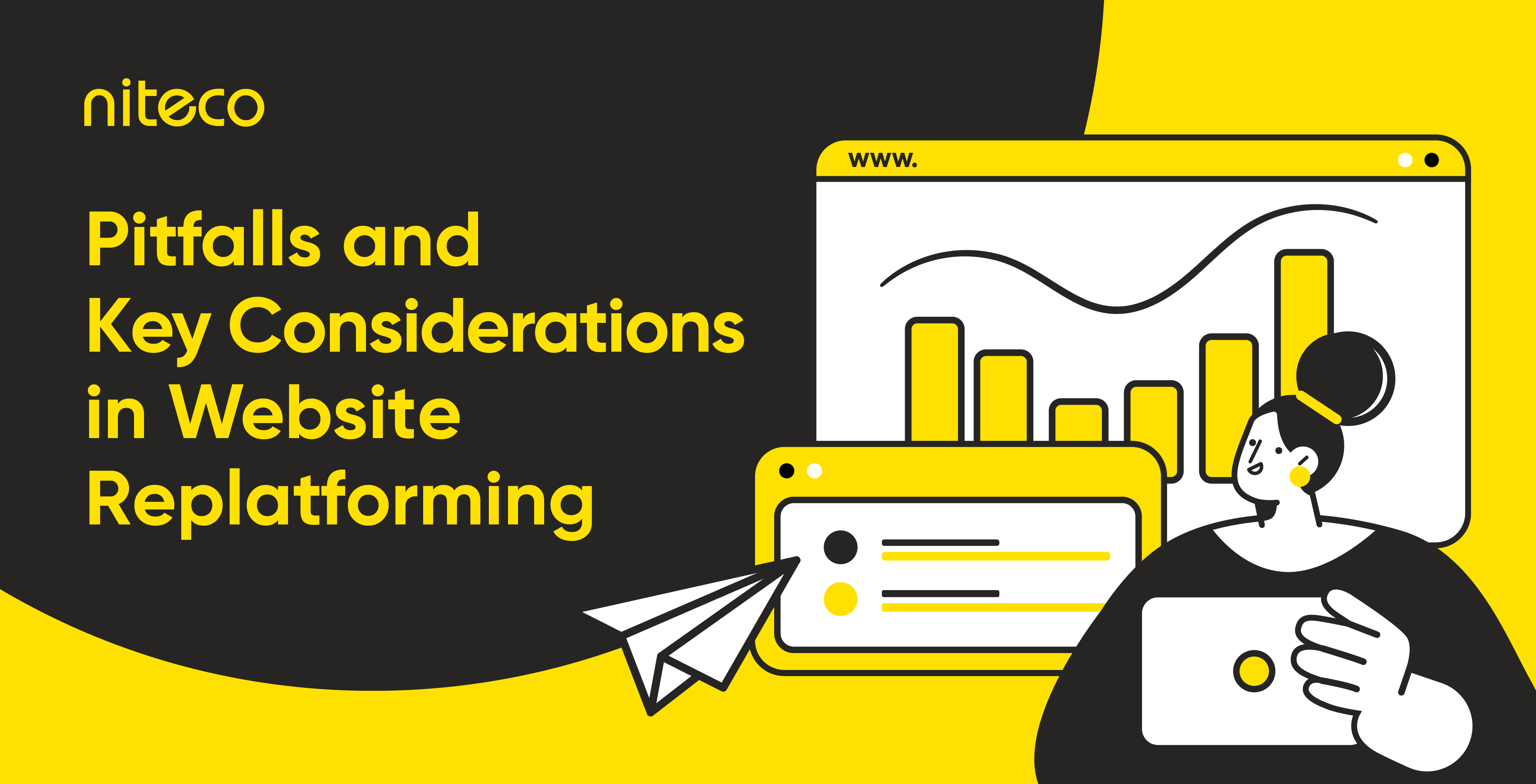With digital experiences now stretching across websites, apps, smart devices, and even kiosks, brands are ditching traditional CMSs in favor of something smarter: headless CMS platforms. By decoupling content from presentation, a headless approach gives you the freedom to deliver content anywhere - fast, flexibly, and at scale.
It’s no surprise that 25% of businesses have already made the shift, with the headless CMS market projected to hit $7.1 billion by 2035 (Future Market Insights), growing at a rapid pace of 22.6% CAGR. Whether you’re powering a sleek e-commerce experience, running a global app, or managing content across multiple channels, going headless keeps things agile and future-ready.
So, what are the best CMS headless platforms making waves in 2025?
We’ve curated a list of top performers that go beyond just flashy features. These platforms stand out for their flexibility, developer-friendliness, seamless integrations, e-commerce support, and omnichannel content delivery. We also considered innovation, security, and market reputation to bring you a well-rounded view.
Ready to meet the platforms shaping the future of digital content? Let’s dive in.
What to look for in a headless CMS
Not all headless CMS platforms are created equal - and choosing the right one can make or break your digital experience. Whether you're a developer, marketer, or somewhere in between, it's worth knowing what separates the good from the game-changing.
From seamless API integrations to rock-solid scalability, this section breaks down the must-haves to keep your content flowing smoothly across every channel. Think of it as your cheat sheet for picking a headless CMS that doesn’t just work - but works for you.
Here’s a quick rundown of the essentials.
- API capabilities: Evaluate whether the CMS offers a RESTful API or GraphQL API, considering the efficiency of data fetching, documentation, and ease of use for the development team.
- Content modeling: Ensure the CMS provides a flexible and robust system for structuring content with custom content types, fields, and relationships to support reusability and omnichannel delivery.
- Scalability and performance: Look for features like CDN integration, caching mechanisms, and API performance optimization to ensure your content can be delivered quickly and reliably to a growing audience across various platforms.
- Security: Consider the authentication and authorization methods, data security capabilities, and API security best practices offered by the headless CMS to protect your digital assets.
- Developer experience: Assess the availability of developer tools, SDKs, comprehensive documentation, and community support to ensure your development team can efficiently integrate and work with the headless CMS.
And there are other criteria to choose the most suitable headless CMS for your business, including pricing - choosing a reasonable price might have a positive effect on your decision-making. Also, the flexibility and customization options should be taken into consideration. As your business doesn’t stand still, it will grow and span, so you will need more changes accordingly. A flexible CMS might be a game changer here.
Top headless CMS in 2025
You’re now equipped with the essentials - so let’s jump into our headless CMS comparison and explore the best headless CMS for e-commerce and beyond.
Contentful
Contentful stands out as a trusted choice among headless CMS platforms, celebrated for its robust infrastructure and developer-centric design. Trusted by industry giants like IKEA, Spotify, and Twilio, it provides a scalable content platform perfect for complex digital environments.

Particularly popular in e-commerce, Contentful excels in scalability and effortless integrations, enabling brands to centralize their content while keeping storefront operations separate for greater flexibility. In recognition of its innovation and enterprise-ready capabilities, Contentful was named a Strong Performer in the 2023 Forrester Wave™ for CMS - a testament to its growing influence in the headless CMS space.

A scalable connected ecosystem - Contentful
Key features
- API-first & cloud-native: Modular content and cross-space references enable efficient reuse across websites, apps, and digital storefronts.
- Composable content & omnichannel delivery: Free cloud plan with full Rest API and GraphQL access for building fast, scalable e-commerce experiences with Shopify, BigCommerce, and more.
- Extensible App Framework: Enhances editorial workflows and connects to third-party tools like payment gateways and CRMs, or builds custom tools tailored to your needs.
|
Pros
|
Cons
|
As a trusted Contentful partner and having 29 certified experts under our belt, we know the platform like the back of our hands - and we’re ready to help you unlock its full potential for your business.
Umbraco
Another big player in the field is Umbraco, with two solutions for different needs. Its SaaS headless CMS, so-called Umbraco Heartcore is offered to embrace headless architecture. With its flexibility, editor-friendly interface, and .NET framework backing, the platform is trusted by industry leaders across the globe like Carlsberg and Mercedes-Benz.
For e-commerce, Umbraco Commerce (formerly Vendr), works well with the self-hosted or cloud version of Umbraco CMS. It’s not compatible with Heartcore yet, so if you’re using Umbraco’s SaaS headless setup, Commerce isn’t currently an out-of-the-box option. But within the on-premise or cloud-hosted projects, Umbraco Commerce offers the tools to manage storefronts and scale digital selling alongside rich content management.

A user-friendly structure – Umbraco CMS
Key features
- Flexible content modeling with compositions: The content architecture supports reusability through Compositions, making it easy to create structured, scalable content types across your site - ideal for building consistent product pages and landing layouts.
- Commerce-ready and API-driven: With integrations like MakeCommerce and support for webhooks and APIs, Umbraco enables dynamic e-commerce workflows – from inventory updates to cart syncing – tailored to fit your custom stack.
- Editor-friendly experience with deep extensibility: Marketers love Umbraco’s intuitive editing tools, while developers can enhance the platform with custom dashboards, property editors, and plugins – making it perfect for teams balancing content agility with technical freedom.
|
Pros
|
Cons
|
As one of the most reliable Umbraco partners, we help businesses build and scale their Umbraco CMS to deliver real results. If you're working with Umbraco, let us be the team that powers your success.
Kontent.ai (formerly “Kentico Kontent”)
Kontent.ai is a cloud-native headless CMS designed for enterprises managing complex, multichannel content operations. Its content-first approach separates content from design, making it easy to reuse across platforms. With structured content modeling, real-time collaboration, and powerful APIs, teams can deliver consistent, scalable experiences while streamlining workflows and operations.
Algolia leveraged Kontent.ai to unify content workflows across product teams, while Oxford University used it to modernize and scale its editorial process across multiple faculties.

Content-first approach - Kontent.ai
Key features
- Scalable commerce integrations: Supports omnichannel product experiences and integrates with leading e-commerce platforms.
- Workflow & governance: Offers detailed content approval workflows, version history, and granular user roles for enterprise control.
- Content modeling & automation: Handles complex product catalogs and automates personalized marketing based on user behavior.
|
Pros
|
Cons
|
Strapi
Strapi is an open-source headless CMS built on Node.js, designed with developers in mind. Known for its flexibility and high level of customization, it’s a favorite for e-commerce projects with unique integration needs. Brands like Walmart, Accenture, NASA, and Toyota have adopted Strapi for flexible content management.
What sets Strapi apart is its focus on security, compliance, and community. It is GDPR-compliant and holds a SOC 2 Type 2 certification, ensuring enterprise-grade data protection. Beyond that, Strapi invests in its ecosystem through initiatives like the Community Stars Program, which recognizes and supports standout contributors.

Key features
- Self-hosting flexibility: Full control over hosting and data—ideal for bespoke ecommerce solutions.
- Plugin ecosystem: Extendable with Stripe, PayPal, or custom checkout flows.
- GraphQL & REST APIs: Enables smooth integration with commerce engines like Shopify, Snipcart, and Commerce.js.
|
Pros
|
Cons
|
Ghost
Originally a blogging platform, Ghost has grown into a sleek, modern headless CMS. Its minimalist approach makes it especially attractive to indie creators, publishers, and media brands seeking a streamlined way to manage and distribute content.
It’s ideal for newsletters, content-driven commerce, and digital subscriptions - particularly appealing to indie creators and media brands like The Atlantic and Unsplash. With a strong focus on performance and simplicity, it continues to be a popular choice for those who want a no-frills publishing experience that scales with their audience.
Top features
- Built-in membership & payments: Ideal for content monetization and digital product sales.
- Stripe integration: Handles payments out of the box.
- Clean, fast API: Optimized for lightweight storefronts or content-driven product sites.
|
Pros
|
Cons
|
Sanity
Sanity is a highly flexible headless CMS built for both developers and content teams. It offers customizable content models and real-time collaboration, making it ideal for fast-moving e-commerce teams. Brands like Figma, Nike, and Sonos use Sanity to manage their digital content.
Top features
- Real-time content studio: Great for product editors and merchandisers working in sync.
- API-first and schema-free: Easily connects with platforms like Shopify and Commerce Layer.
- Custom UI capabilities: Build custom UIs for managing products, checkout flows, or inventory tracking.
|
Pros
|
Cons
|
Storyblok
Storyblok stands out for its intuitive visual editor and support for complex, component-based content structures. It bridges the gap between developer flexibility and content editor usability, offering a true headless experience without sacrificing ease of use for marketers.
Beyond its powerful editing tools, Storyblok is known for producing valuable industry research, insightful case studies, and in-depth guides that help teams stay ahead of digital trends. Their resource-rich documentation and responsive support team make implementation smoother for both developers and content teams.
Trusted by brands like Adidas, Marc O’Polo, and Renault, this platform empowers businesses to build scalable, omnichannel experiences with confidence and clarity.
Key features
- Visual Editor for headless: Editors can preview product pages and updates in real-time.
- Shopify & BigCommerce integration: Prebuilt connectors for quick e-commerce setup.
- Component-based content management: Ideal for structured product pages, promotional blocks, and reusable content.
|
Pros
|
Cons
|
Conclusion
The world of headless CMS is packed with powerful platforms, but the right fit really depends on your unique goals. For e-commerce, platforms like Contentful, Sanity, and Storyblok lead with flexibility and performance. If you’re on a .NET stack, Umbraco Heartcore or Kentico are great choices, while Strapi offers open-source control. For content-driven sites, Ghost is a fast and simple solution.
There’s no one-size-fits-all answer—but the good news is, you don’t have to figure it out alone. If you’re looking for expert help navigating your options or implementing a solution that’s built to scale, Niteco is here to help turn your digital goals into reality.
Explore the possibilities, weigh your priorities, and take the next step toward finding the best headless CMS for your business. The future of content is flexible - now’s the time to make it work for you.
FAQs about headless CMS
If you’re looking for free options, check out Strapi,Ghost or Umbraco. These open-source platforms give you the flexibility to customize and scale your content management without any upfront costs. Just be ready for some technical setup and maintenance!
A headless CMS is perfect for ecommerce because it lets you manage all your content and product data in one place, while pushing that content to any platform (website, mobile, kiosks) effortlessly. It’s the key to delivering a seamless, omnichannel shopping experience that grows with your business.
Costs can vary widely! You can find free open-source options like Strapi or Ghost for smaller projects. But if you need advanced features or enterprise-level scalability, platforms like Contentful, Kontent.ai, or Umbraco can cost anywhere from $300 to several thousand dollars a month, depending on the scale and features you need.



